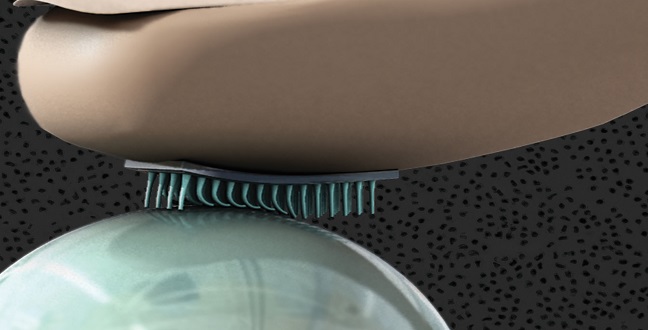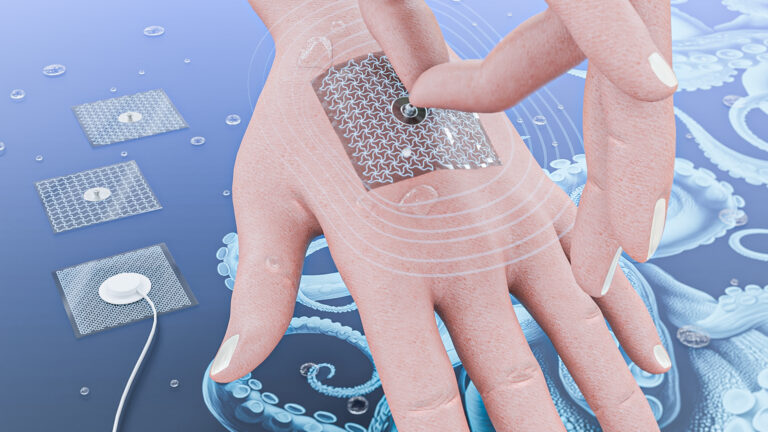Electrical Engineering
Sensors for a light touch
Biocompatible tactile sensors based on magnetic hair-like structures enable new applications for touch sensors.


The tactile sensors consist of iron nanowires embedded in an elastic polymer matrix that is shaped to form the hairs.
© 2015 KAUST
Highly sensitive tactile sensors that can mimic the touch sensitivity of human skin have been developed by researchers from KAUST.
Tactile sensors can be used in a range of applications from artificial skins to energy generation. Typically they are made out of materials that change their electrical resistance or create an electrical voltage when touched. However, these materials often lack the minute sensitivity and dynamic range needed for more advanced applications.
These high sensitivities can be achieved through sensors that mimic the function of cilia, which are small hair-like structures that line the human inner ear and that insects have on their legs to sense vibrations.
“The bio-inspired sensors feature hair-like structures that are implemented in a compact design and operate with ultra-low power consumption,” said KAUST’s Jürgen Kosel.
The tactile sensors developed by KAUST Ph.D. student Ahmed Alfadhel and Kosel consist of iron magnetic nanowires embedded in an elastic polymer matrix that is shaped to form the hairs. If the hairs are bent, these nanowires change the relative orientation to the substrate to which the hairs are anchored. This also shifts the orientation of the nanowire magnetic field. A magnetic sensor that is embedded into the substrate detects these orientation changes and converts them into an electrical signal.
Unlike previous tactile sensor designs, the magnetic fields do not require an electrical connection to the individual hairs. In addition, the sensors are able to pick up tiny changes in the magnetic field, giving these sensors the potential for acute sensitivity, although the sensitivity of the devices and the forces that they can detect depends on their design. Some of the devices have been shown to react to small perturbations equivalent to the detection of a small fly landing on skin.
As the sensors operate by remote sensing of the magnetic fields, their power consumption is extremely low at only about 0.08 microWatts.
The sensors can be fabricated on flexible substrates to be used, for example, as artificial skins. They work in air and in liquids, and the biocompatibility of both the polymer and the iron nanowires means the sensors can also be used for applications inside the body, Kosel explained. The researchers plan to envelop a surgical instrument with the tactile sensor so surgeons will be able to ‘feel’ tissue as they move the instrument through an artery.
References
-
Alfadhel, A. & Kosel, J. Magnetic nanocomposite cilia tactile sensor. Advanced Materials 27, 7888-7892 (2015).| article
You might also like

Electrical Engineering
Micro-LEDs boost random number generation

Bioengineering
Sensing stress to keep plants safe

Computer Science
Sweat-sniffing sensor could make workouts smarter

Electrical Engineering
New tech detects dehydration by touching a screen

Electrical Engineering
A new interface for efficient electronics

Electrical Engineering
Artificial neurons enable neuromorphic computing with light

Electrical Engineering
Narrow-linewidth lasers bring low-noise answer

Electrical Engineering



